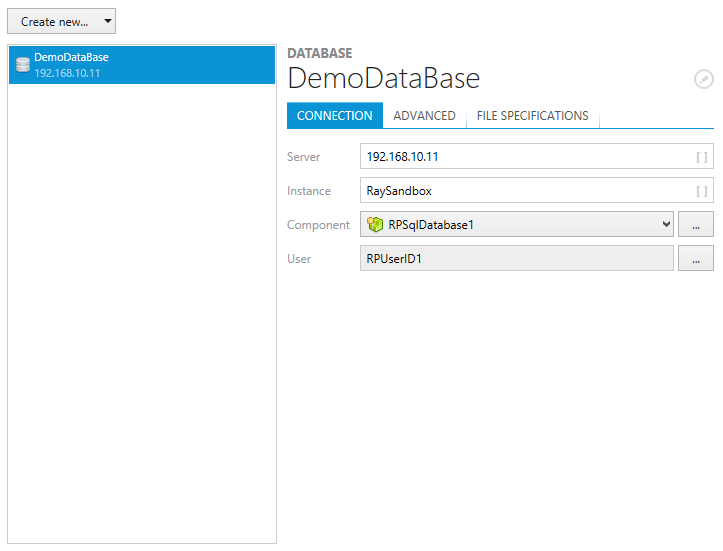This view allows you to install and manipulate SQL databases on the target system. The provided functionality is designed to support SQL database management only. Other database types have to be installed and manipulated by individual custom action measures.
|
Note: Another view of the Visual Designer, SQL scripts, bases on the SQL database objects created within this view. Identifying the target database for SQL script execution is only possible, if a database object itself has been provided with connection information before. Therefore, adding SQL database objects in RayPack is not only required if a new database has to be created on the later target machines of the package, but as well if SQL scripts have to run on already existing SQL databases on those target machines. SQL database objects may be used as mere database connection definition references. |
Since database handling is not part of the MSI Standard, RayPack utilized special Installer database tables to manage SQL database information until a package is built from the project:
•RPSqlDatabase - Contains core information about the database object, such as the parent server.
•RPSqlFileSpec - Contains data about SQL database files handling options, such as log file specifications
•RPUser - Contains user profiles required for SQL database connections. User objects are required for SQL database and SQL script handling.
If these tables have not been present within the current packaging project before, they are automatically added with the first SQL Database object created within the project. Please refer to the section about Custom RayPack installer database tables for further details and table specifications.
The SQL Databases view is separated into two main areas:
•A list of already available SQL database objects on the left-hand side
•A details pane for viewing and editing the properties of already existing SQL database objects at the right-hand side
To access the Installer database counterpart of an SQL database item, users have to right-click its list object, and select Go to row from the context menu. The database table RPSqlDatabase is loaded, with a highlight set on the matching data row.
Standard SQL Database Management Procedures
Common management procedures for SQL database objects are described within the following topics:
